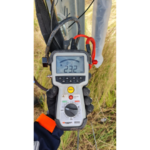A well-crafted solar electrical plan is the backbone of any successful solar project. It ensures that every component is accounted for from site selection to system commissioning. And as solar adoption accelerates across Australia, the demand for robust planning, technical precision, and compliance with electrical regulations has never been higher. That said, solar electrical plans maximise energy output and financial returns. It safeguards long-term reliability and safety. In this article, you get to explore the essential steps and considerations that underpin effective plans including roadmap for developers, energy engineering professionals, and electrical contractors in Sydney.
Site Selection—The Cornerstone of Solar Electrical Planning
Selecting the right site is the first and most critical step in any solar electrical plan. With site selection, it directly impacts a project’s technical, economic, and environmental viability. Factors such as solar irradiance, land availability, topography, and proximity to grid infrastructure should be thoroughly evaluated.
That said, advanced site assessment models, such as the Choosing by Advantages (CBA) method, allow developers to compare potential sites objectively. They do this by weighing economic, technological, social, geographical, and environmental considerations.
This systematic approach ensures that the chosen site meets immediate project goals and aligns with long-term operational and regulatory requirements.
Solar Resource Assessment and System Sizing
Once a suitable site is identified, the next step is to assess the solar resource and determine the optimal system size. This involves analysing historical weather data, shading, and local climate to estimate the site’s solar potential.
Solar simulation software such as PVsyst is commonly used to enhance accuracy and reliability. PVsyst allows engineers to model the site-specific conditions in detail and simulate the expected energy output over time, taking into account factors like panel orientation, shading patterns, and system losses.
Using PVsyst, different system configurations can be tested to ensure the solar array is large enough to meet this demand while fitting within the site’s spatial and budgetary constraints. Additionally, the software helps verify compliance with utility interconnection rules, ensuring the design is both technically feasible and aligned with local electrical regulations.
This data-driven approach supports informed decision-making and maximizes the overall efficiency and performance of the solar installation.
Technology and Component Selection
Selecting the right technology and components is vital for the performance and durability of a solar installation. Solar electrical plans should specify the type of photovoltaic (PV) panels—monocrystalline, polycrystalline, or thin-film—based on efficiency, cost, and site conditions.
Inverter selection is equally important, with options ranging from cost-effective string and panel-level microinverters to central inverters. Power converter units are also commonly used for enhanced monitoring and optimization in large-scale projects. Additional components, such as mounting systems and wiring, must be chosen for their compatibility with the site’s structural and environmental conditions.
Moreover, detailed specification sheets and technical documentation are essential for permitting, procurement, and long-term maintenance.
Electrical Design and Plan Sets
Every electrical plan starts with a comprehensive design. This includes detailed diagrams showing panel configuration, wiring routes, inverter locations, disconnect switches, and grid connection points. That said, plan sets should feature site layouts, equipment placement, and all necessary code compliance documentation.
Adhering to electrical regulations is crucial, as non-compliance can lead to costly delays or safety hazards. Fortunately, electrical contractors in Sydney and across Australia ensure that all designs meet local building and electrical codes, including proper labeling and warning signage.
Grid Interconnection and Permitting
Connecting a solar system to the grid requires careful coordination with utility providers and regulatory authorities. Solar electrical plans should include all technical documents needed for grid interconnection applications, such as load calculations, single-line diagrams, and protection schemes.
Navigating the permitting process involves demonstrating compliance with electrical regulations and securing approvals from multiple agencies. On the other hand, early engagement with utilities and permitting bodies can help identify potential challenges and ensure a smooth path to grid integration.
Environmental and Structural Considerations
Solar projects are designed with environmental stewardship and structural integrity in mind. Environmental assessments evaluate the impact on land use, biodiversity, water resources, and visual amenity. Mitigation measures, on the other hand, can minimise adverse effects.
Structurally, mounting systems and equipment supports are engineered to withstand local weather conditions, including wind and seismic loads. Fortunately, energy engineering professionals ensure that both environmental and structural factors are addressed in the planning phase, supporting long-term project success.
Construction, Commissioning, and Operations
The final stage of a solar project involves construction, commissioning, and ongoing operations. During construction, project managers oversee the installation to ensure adherence to the solar electrical plans and all safety and local standards.
To keep the project on track, all drawings must be made available in advance, and equipment procured on schedule to avoid delays and costly variations.
As for commissioning, it tests each system component, verifying performance, and ensuring compliance with electrical regulations. Once it’s done, a robust operation and maintenance (O&M) plan maximises system uptime and efficiency. With the use of modern monitoring systems, it provides real-time data, enabling proactive maintenance and response to issues.
Find Renewable Energy Plans at Electra Globe
Effective solar electrical plans are the foundation of every successful solar project, integrating technical excellence, regulatory compliance, and environmental responsibility. By following a systematic approach from site selection and resource assessment to design, permitting, and operations. In this way, developers and contractors can deliver reliable, high-performance solar installations.
As a whole, energy engineering expertise and attention to detail from companies will remain essential. Fortunately, ElectraGlobe exemplifies these qualities, providing comprehensive consultancy and technical support. We ensure every project achieves its full potential in Australia’s dynamic renewable energy landscape. To know more, contact us today!
Frequently Asked Questions
If you’re looking into investing in renewable energy, here are a few commonly asked questions you might have.
What is the best electricity plan for solar?
Finding the best electrical solar plan would depend on your needs. Whether it’s for a household or commercial space, the suitable package would vary depending on your electrical needs.
What is the 20% rule for solar panels?
In Australia, residential solar panel installations are not allowed to create more than 20% of the entire property’s yearly electrical consumption.







